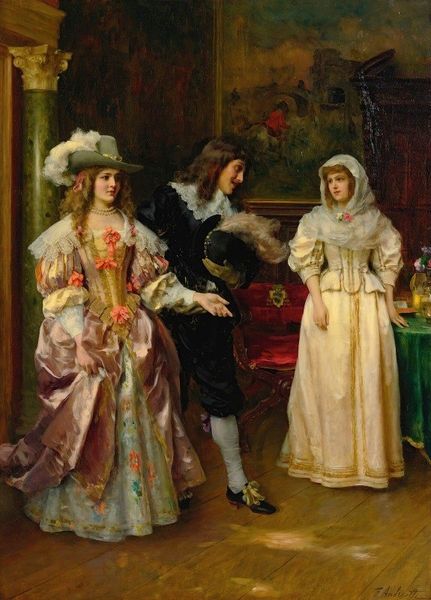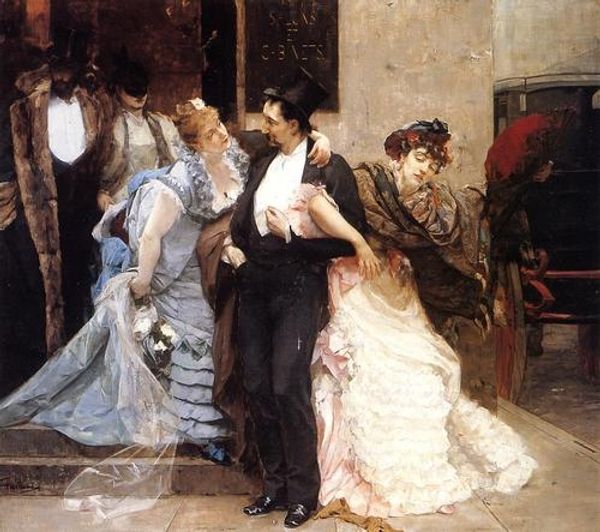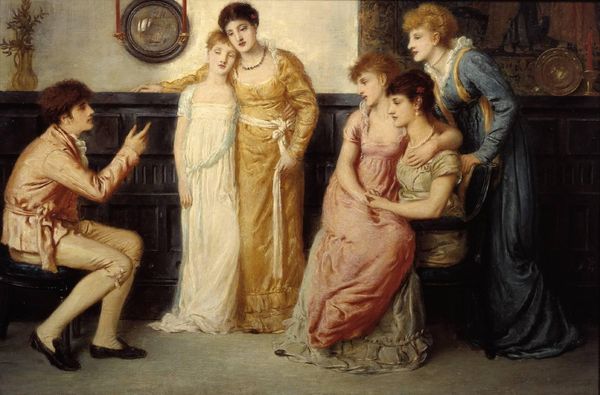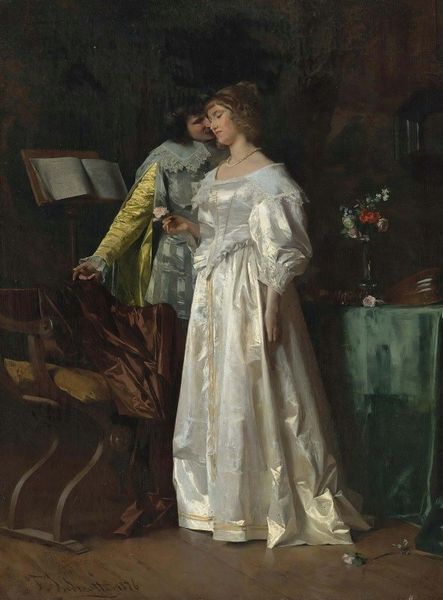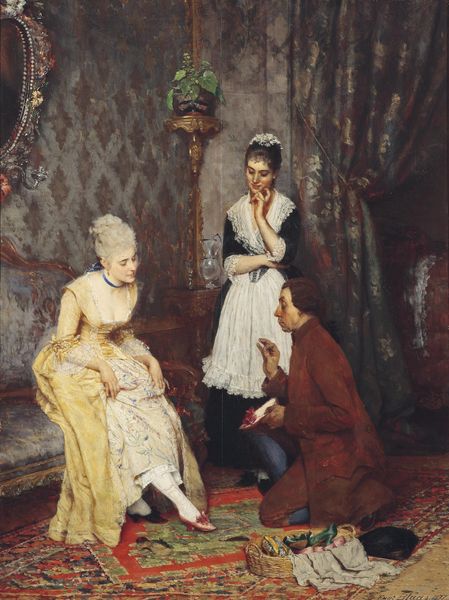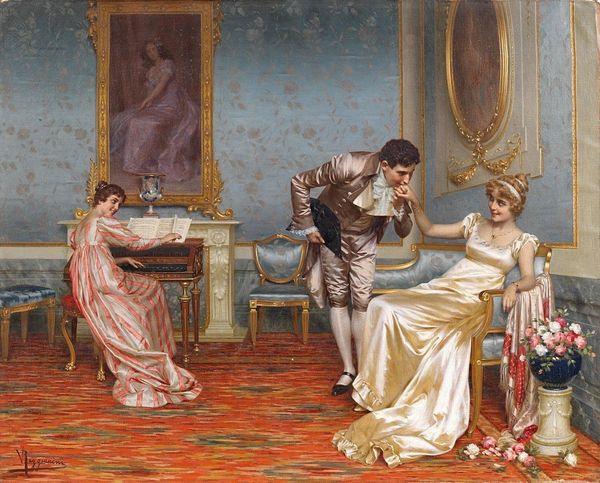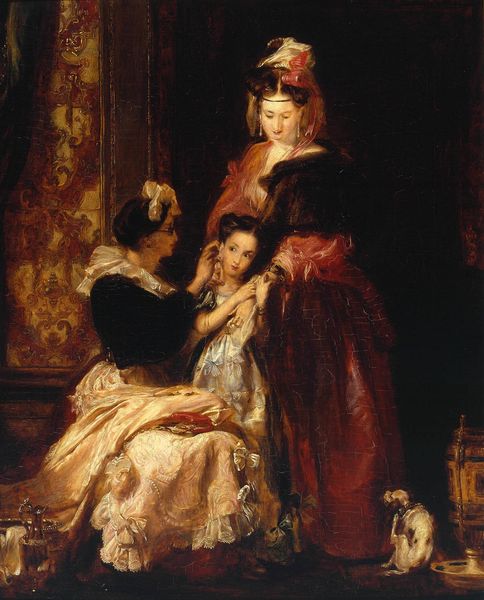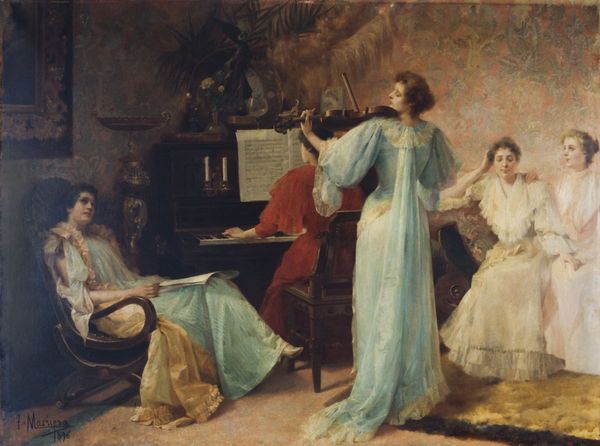
Copyright: Public Domain: Artvee
Curator: Edwin Austin Abbey's oil on canvas, "Who Is Sylvia? What Is She That All the Swains Commend Her?", created between 1896 and 1899, immediately suggests a moment lifted from Shakespeare. What's your initial take on its atmosphere? Editor: It's striking how staged it feels, like a tableau vivant! Sylvia looks impossibly serene amidst what should be ardent admiration. The color palette feels intentionally subdued, all muted jewel tones and shadows that practically scream "courtly love drama." Curator: Absolutely, and that calculated staging draws on powerful artistic traditions, particularly the Pre-Raphaelites and Academic Art, each with distinct interpretations of beauty, history, and narrative. What recurring motifs do you observe contributing to the cultural weight of this piece? Editor: Well, the musical accompaniment jumps out immediately – the lutes suggest serenades and performances, painting her as the object of admiration, placed deliberately center-stage in a manner akin to Renaissance paintings of the Madonna, which only makes Sylvia's enigmatic expression even more puzzling. Her costume is gorgeous, I also find a strange theatrical formality that’s really captivating. Curator: Yes, music as a language of courtship is key here. We see a figure in red, partially obscured, also holding a lute—potentially a commentary on the nature of hidden desires within such displays of love? Note how Sylvia’s white dress suggests purity, though the boldness of her red sleeves hint otherwise. This mirrors the internal struggles characters undergo, not too far from the romantic ideals in art that dominated much of the Victorian era, Editor: Hidden desires—right! Her expression definitely plays into it too. Is she unimpressed, above it all, maybe even secretly yearning for an escape from all of this? Also, isn't it curious how we’re automatically encouraged to ‘commend her’ even before we actually get to know her! It plays to some tricky social power dynamics there. I also cannot ignore the little money pouch, looks full, which probably emphasizes an arranged situation, it could symbolize marriage or trade and also her freedom to manage assets? I'm obsessed with these little hints! Curator: Fascinating to notice how the pouch alludes to monetary aspects in what should be a pure celebration of the protagonist and the whole era! As we reflect, it strikes me that Abbey has cleverly packed the work with symbolism open for interpretation. Editor: And perhaps, in doing so, reminds us that 'commendation' is never a straightforward thing, is it?
Comments
No comments
Be the first to comment and join the conversation on the ultimate creative platform.
